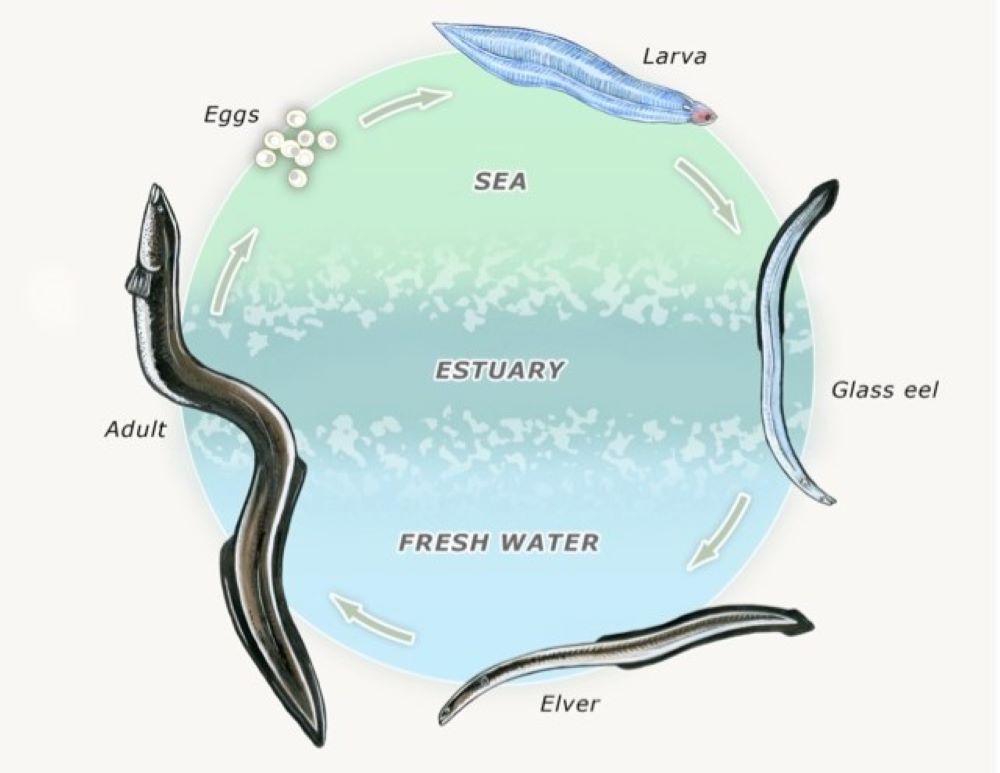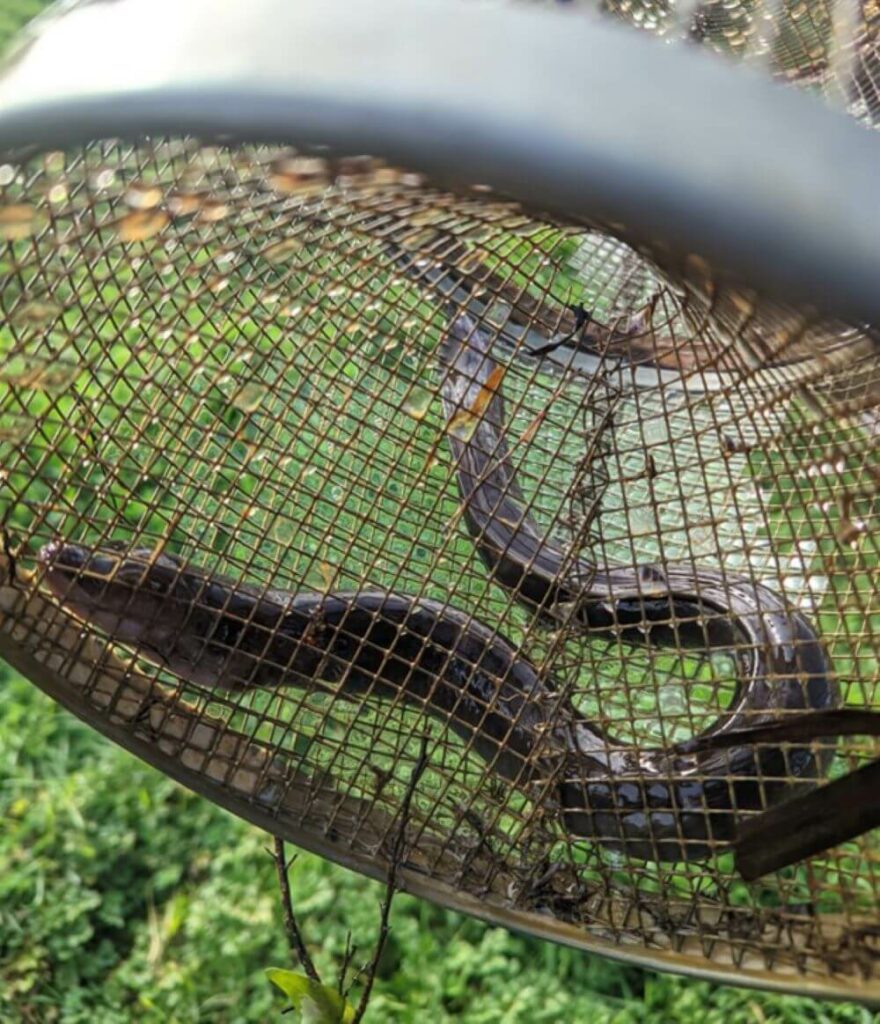We believe in a holistic approach when it comes to protecting and enhancing our natural environment. A major part of this includes restoring our waterways to improve fish passage for freshwater fish species. Many times we’ve done fish surveys on farms and lifestyle properties and have been amazed at not only finding eels, kokopu and inanga in our minnows and henaki traps but also at how far they’ve had to travel inland to reach a particular stream or dam.
This is due to a critical component of New Zealand’s endemic freshwater fish species being within their necessity to move upstream and downstream, from freshwater systems to the open ocean. This is best exemplified by the lifecycle of the native longfin eel, which involves massive migrations at various life stages. A juvenile can travel over 330 kilometers inland through freshwater waterways, and a breeding adult travels up to 3000+ kilometers out to sea in order to spawn. The relationship between fish lifecycles and unrestricted fish passage has historically been overlooked, much to the detriment of many New Zealand freshwater fish species including the aforementioned longfin eel, which is currently considered endangered by the IUCN.

A big obstacle for fish passage are culverts. When doing freshwater assessments, what we often come across are culverts that have been installed (or degraded) in a way that does not provide for safe fish passage. An example of this would be a culvert that is perched well above a stream or river. At times, these culverts can mean the death of thousands of eel elvers which have just traveled thousands of kilometers on ocean currents and hundreds of kilometers inland via freshwater river systems.


Luckily, the National Policy Statement for Freshwater (2020) and the National Environmental Standards for Freshwater (2020) aim to provide legislative support for fish passage in the hopes to mitigate restricted access up and downstream for fish when a landowner looks to install a dam, crossing or culvert on their site. As ecologists, it is up to us to identify any potential problematic crossings and apply these legislative rules out in the field. There are also numerous resources to guide landowners on how to improve fish passage such as the NIWA Fish Passage Guidelines or the Ministry for the Environment Essential Freshwater: Fish passage factsheet.

Recently, we were visited by Maungatūroto Public school in association with Whitebait Connection, where the initiative is to educate young minds on environmental concepts with an emphasis on the health of New Zealand’s streams, rivers and wetlands. This presented us with a perfect opportunity to conduct a freshwater fish survey on one of Rural Design’s streams. Students, teachers and ecologists alike were delighted to see that eel elvers were caught within our set traps, indicating that the farm’s culverts and crossings must provide some safe passage for eels, and our streams a healthy home to indigenous fish.

If you are thinking of improving stream habitat and fish passage, or are considering implementing a new river crossing on your site and need some guidance, please see our website: www.ruraldesign.co.nz
